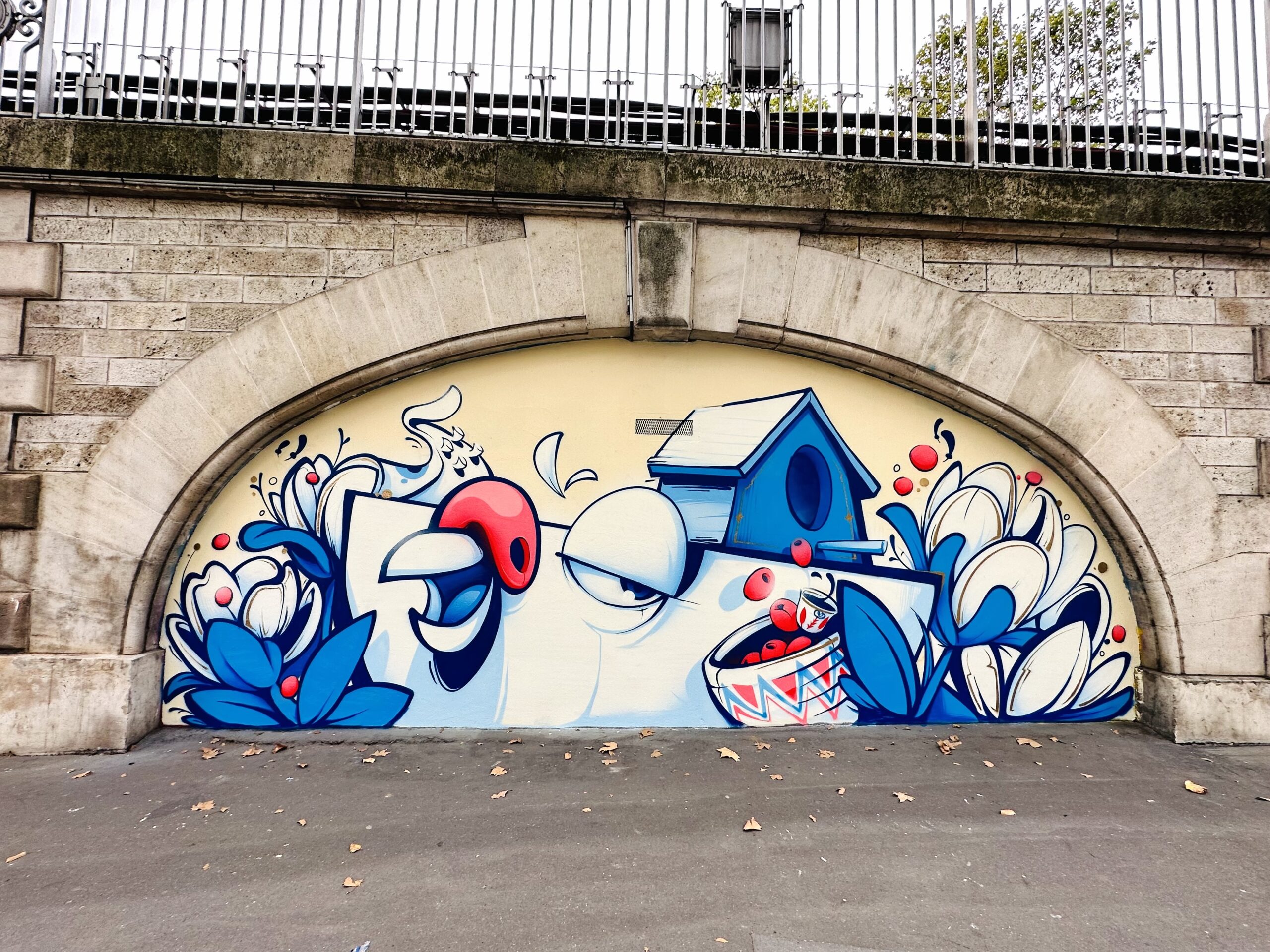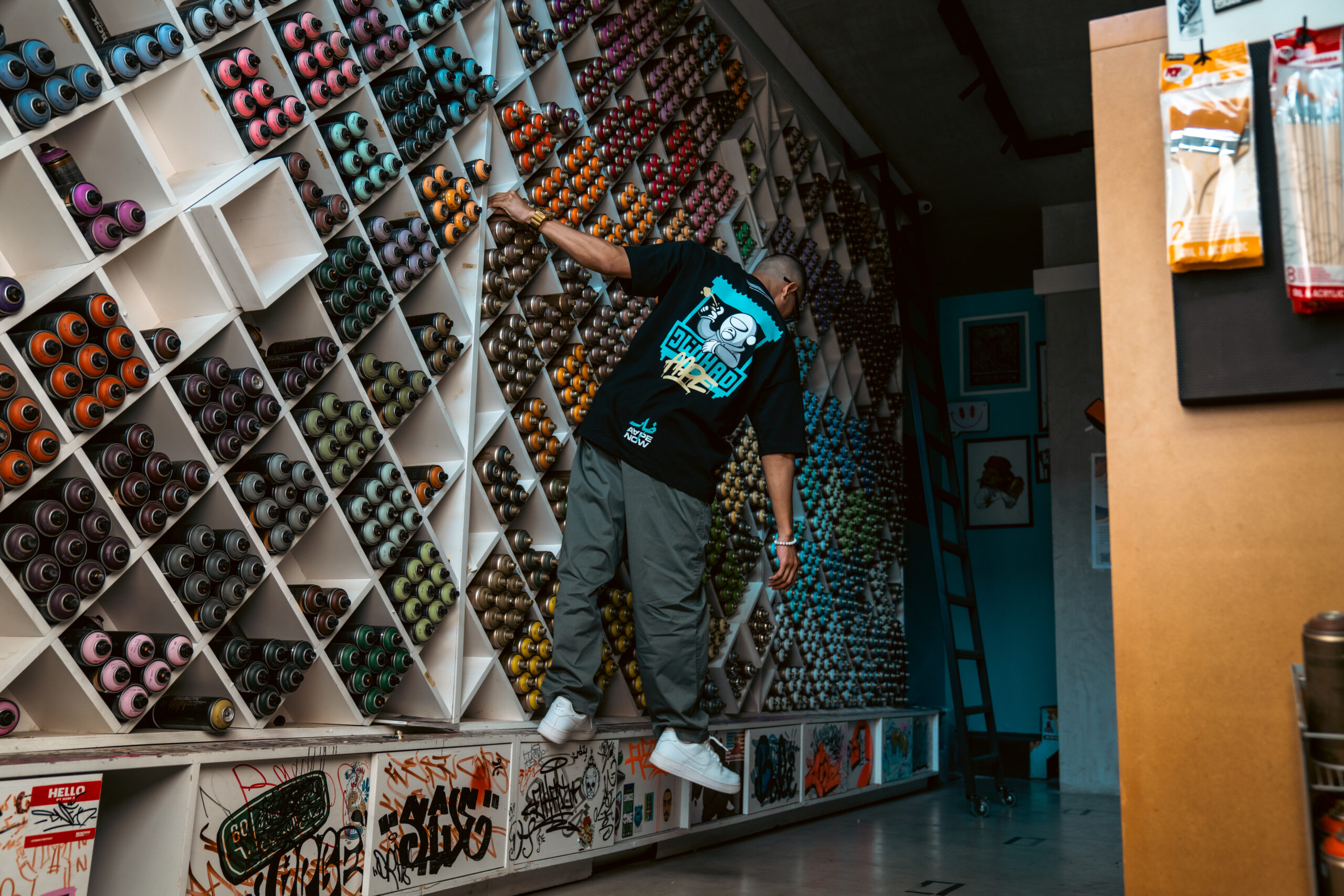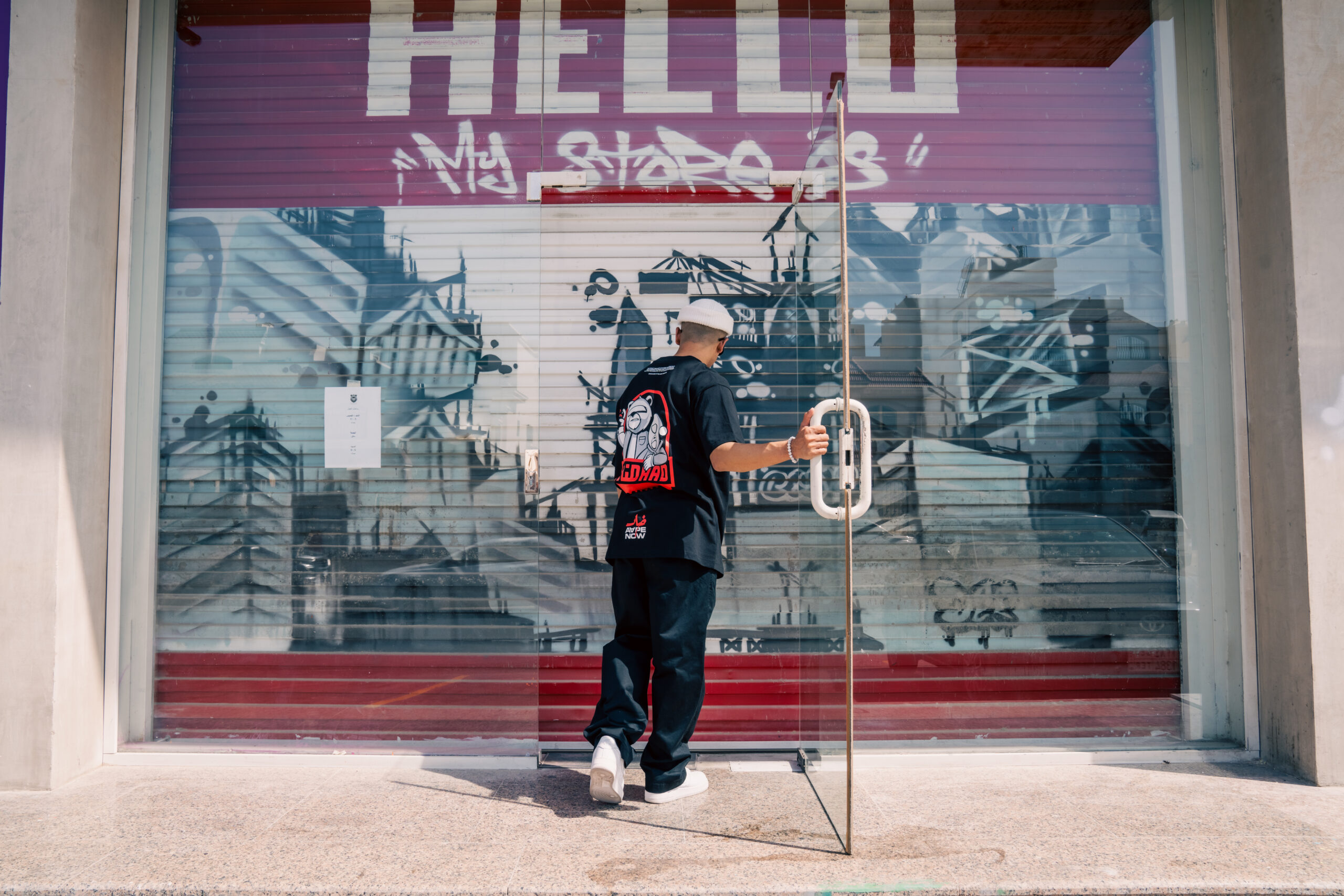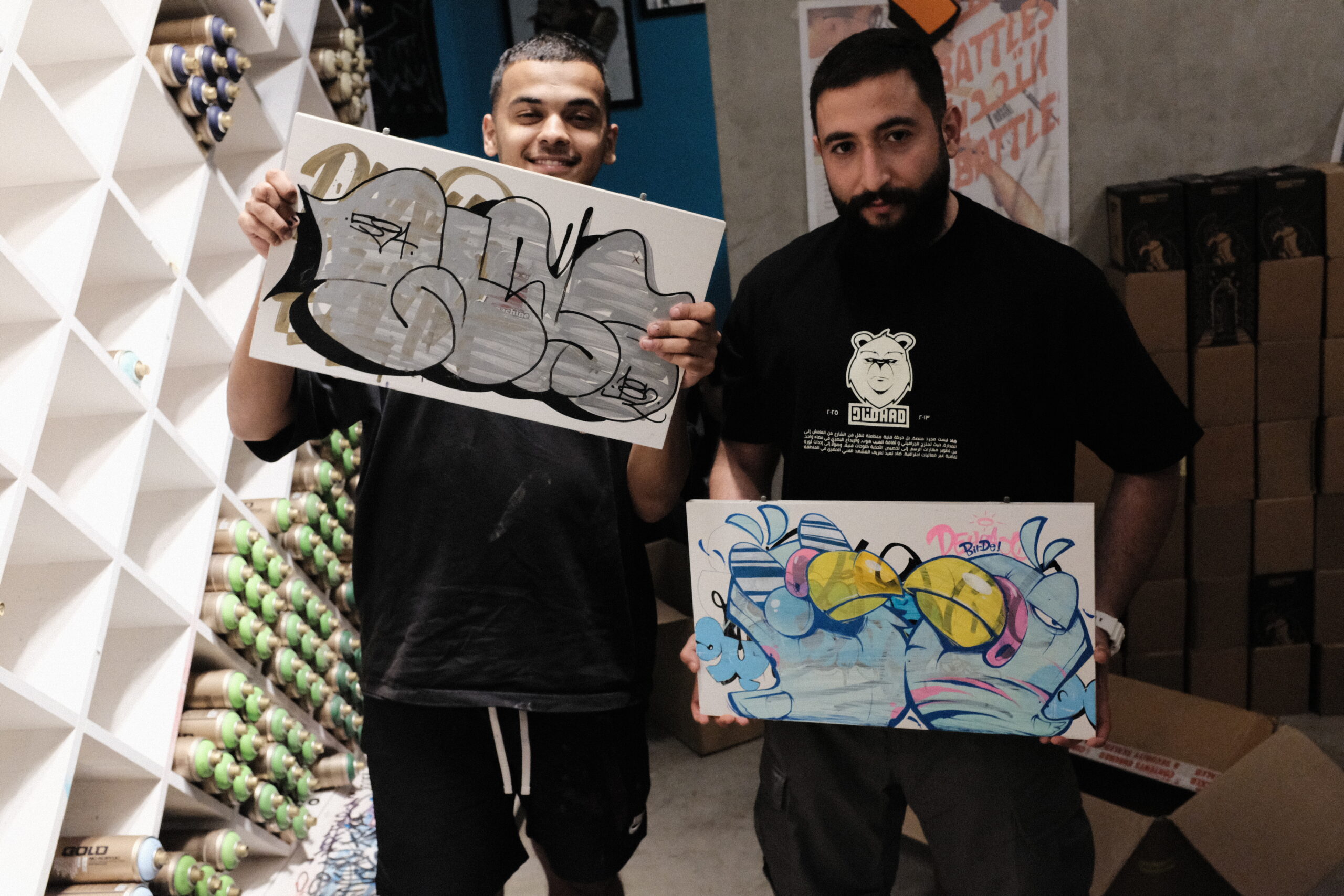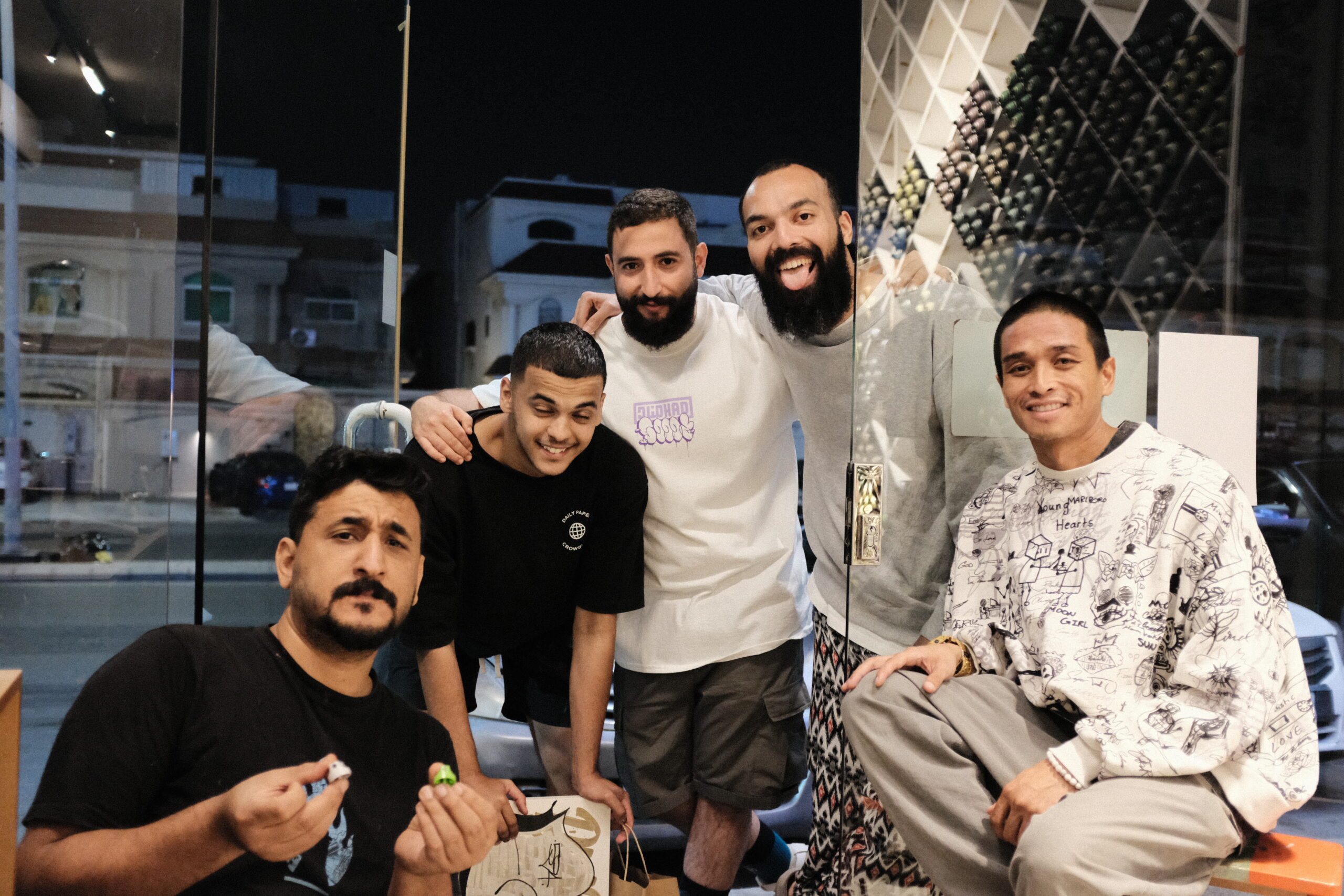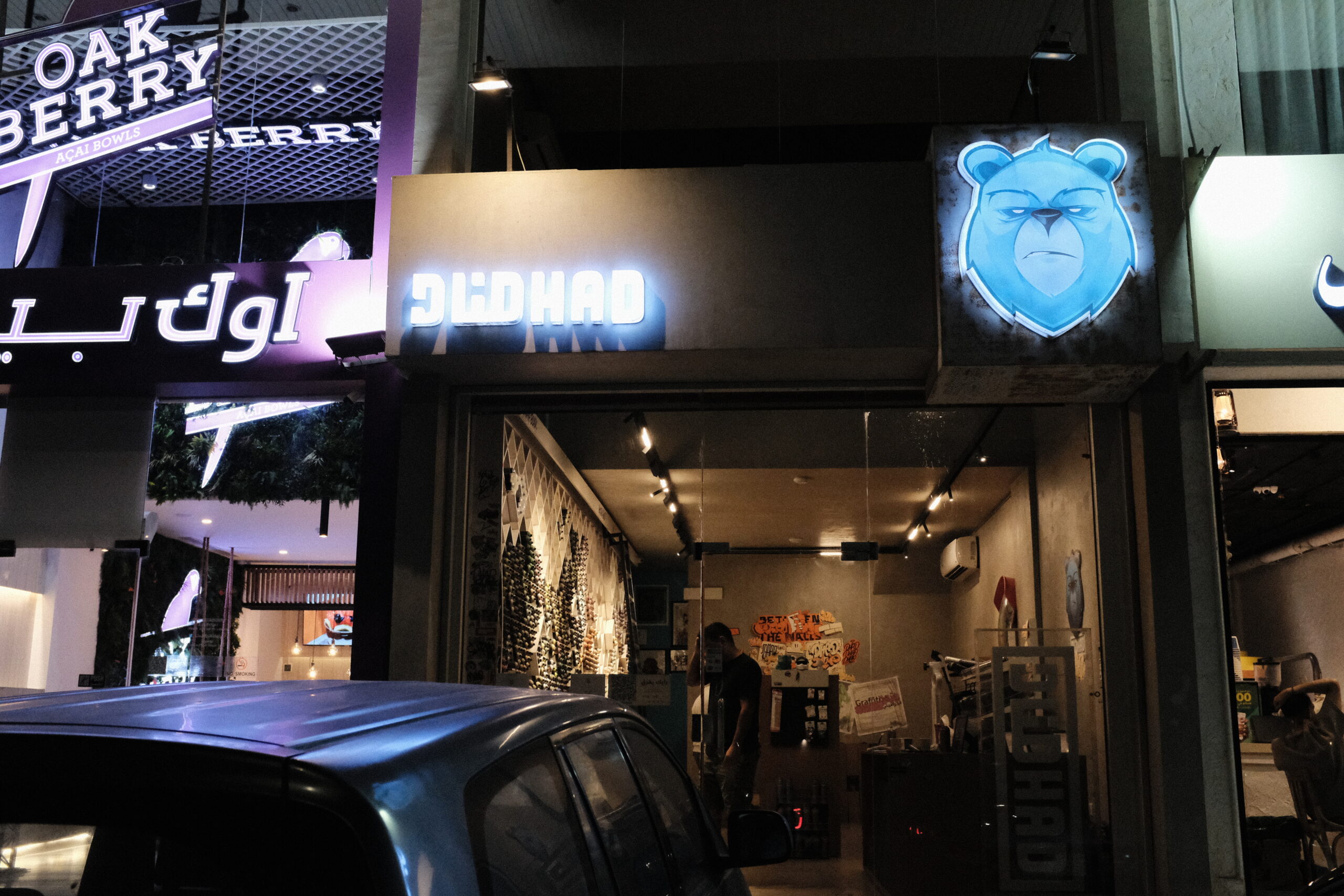From a western perspective the Gulf is not the very first area that comes to people’s mind speaking about graffiti and street art in general. There has been a certain attention paid by western media, and the “main” graffiti scene, mainly related to events mostly held in Dubai, such as the longest graffiti wall for the Guinness world record in 2014 with well known international guests, but for sure the local hard punishment for trainbombing or bombing in general has always caught much more the attention of the dedicated audience.
« If traditionally we tend to refer to New York as the Mecca of graffiti, this time we would like to revert the trend and speak about graffiti in the real Mecca. »
Our focus is on Jeddah, and Saudi Arabia, graffiti scene and its very own Godfather, Deyaa, who, thanks to his own work and the creation of the Dhad store, has supported the movement in the country since day one.
Boxir:Hello Deyaa, nice to hear from you again. Would you like to introduce yourself and start telling about your own graffiti experience in Jeddah, when and how you did start? Can we consider you the very first generation of graffiti writers in the area or are you aware of existing attempts before your time?
Deyaa: Hello Boxir, thank you for the warm welcome. I’m truly happy to connect with you. As you poetically opened this interview by mentioning the « real Mecca »—I’d like to begin there.
I was born and raised in Makkah, in an artistic family. My Father, the visual artist and art teacher Waleed Rambo, had a profound influence on my artistic journey. I still remember the day he took me to school to paint a mural on the theatre wall. It read, in elegant Arabic calligraphy: « Ahlan wa Sahlan » (Welcome). That was the very first mural I ever saw in my life. It lit a spark deep in my subconscious—a spark that would eventually ignite my passion for graffiti.
I’m Deyaa Rambo, a graffiti artist and creative director, active since the very early days of Saudi Arabia’s graffiti movement in 2005. I’ve been making art since I could hold a pen—barely two years old. My parents supported me wholeheartedly, entering me into local art competitions where I consistently placed first. This helped sharpen and grow my artistic skillset, and I gravitated toward creating whimsical, cartoon-like characters as my main style.
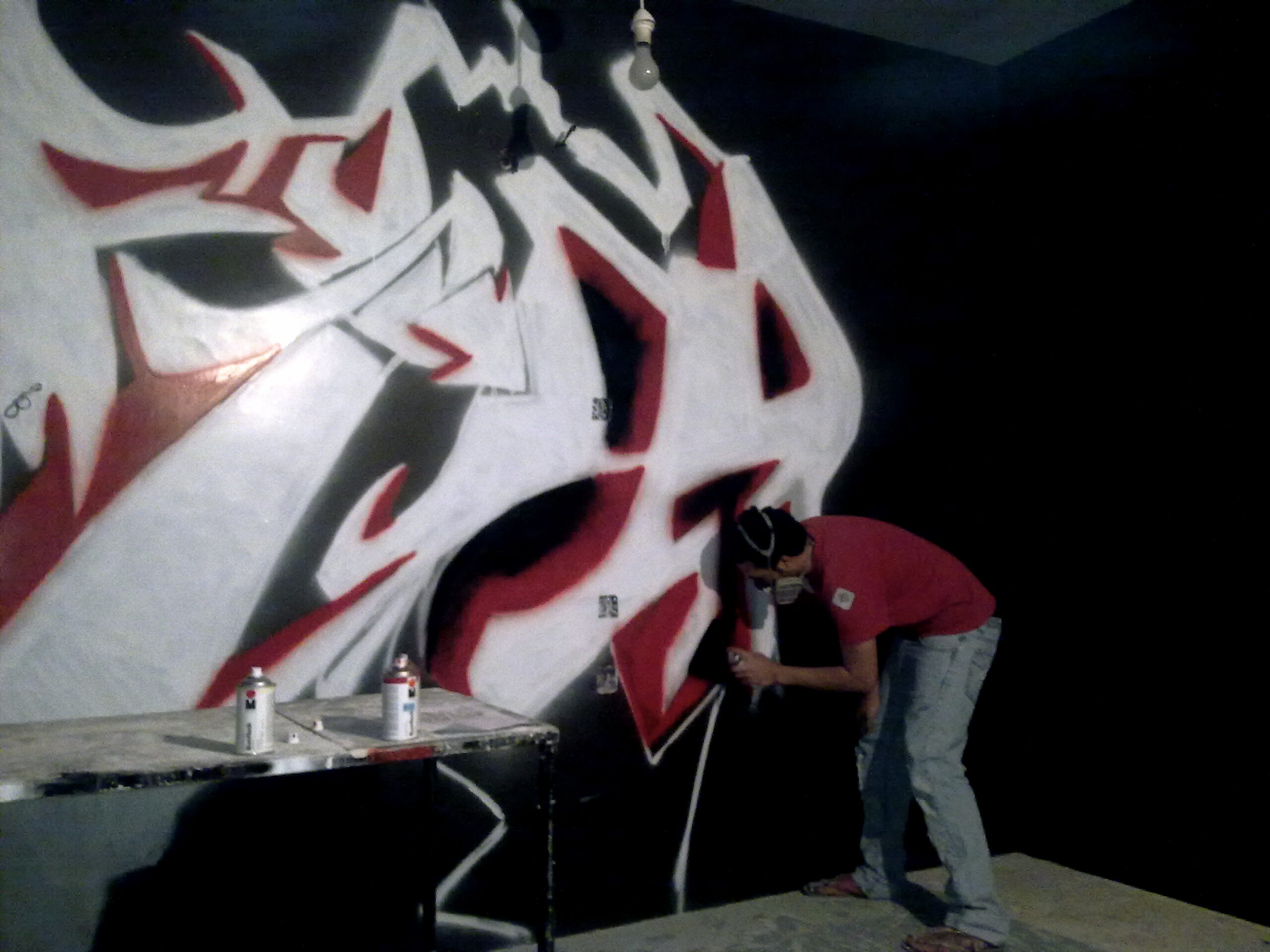
I was in high school when I first heard about a graffiti competition in Jeddah. That moment changed everything. For the first time, I realized—I wasn’t alone. There was a scene, other artists, a community. Until then, I thought graffiti had only been learned abroad.
I may not have been the very first, but in that year, a wave of underground graffiti crews started making their mark—literally. One of the most infamous was a group called X5, which made headlines after its founder was arrested and publicly penalized. It was a pivotal moment that made many of us realize just how risky our passion could be—but also how powerful it truly was.
Boxir: To give a bit more background to our readers, Saudi Arabia has traditionally been considered a very traditional Muslim country, considering also the fact that technically it is one of the few remaining absolute monarchies in the world. At the same time it has been recently facing an incredible change, from a political, cultural and economical point of view. Vision 2030 is possibly the masterplan behind or the final arrival point of this transformation process. Can you tell us how this changing scenario has influenced in the past and will influence in the future the graffiti scene? Have you experienced any major change yet?
Deyaa: There’s no doubt—Vision 2030 is playing a huge role in reshaping the urban art scene across the Kingdom, and graffiti is part of that wave. Before, the only real support came from us, the artists. Everything was grassroots—individual efforts to create, express, and educate.
But now, thanks to the cultural and economic transformation, we’re seeing some support. For example, there was a nationwide competition in 2019 that recognized over 15 different creative disciplines—graffiti was one of them. I was honored to win first place as the top graffiti artist in the Kingdom.
« This kind of recognition changes everything. It empowers artists. It builds platforms. And most importantly—it legitimizes what we do. »
And just to clarify for your readers—Islam doesn’t oppose art, science, or knowledge. On the contrary, art and learning are foundational pillars of the faith. If you look back to the Islamic Golden Age or the flourishing of Andalusia, you’ll see that Islamic civilization was once a beacon of art, architecture, and discovery.
Unfortunately, over time, certain interpretations and misconceptions clouded the essence of the religion. But the tide is turning—and with it, a cultural renaissance is rising.
Boxir: Let’s focus now on Dhad, can you introduce the store? What was the concept behind and how it impacted the local scene? Feel free to recap a bit of the story and the evolution of the store itself, in order to have a proper frame, and if you have any major highlights that in your opinion can be really considered a game changer for the local scene, please mention it, we are pretty curious about…
Deyaa: Dhad was a dream born around late 2010. It started with me and a group of fellow artists—we wanted to bring Arabic identity into graffiti under one united platform.
At that time, graffiti in Saudi was still raw. We didn’t even have access to proper spray paint. That lack pushed us to start importing tools ourselves—not just to use, but to sell to other artists. In 2011, we brought in our first shipment of Ironlak cans, selling them modestly through Facebook and direct contact. We stored everything in my partner Abdullah’s grandmother’s house.
A year later, we signed with Montana Cans—and that’s when things really began to take shape. We revived the idea of Dhad, named after the letter “ض”—a letter that exists only in Arabic, a symbol of our cultural roots.
« From the beginning, I didn’t just want a paint store. I wanted to build something that redefined how graffiti was perceived. I wanted to connect the art to our heritage, and present graffiti in a dignified, professional, and culturally relevant way. »
In 2013, we officially opened Dhad—and it became the turning point. Even though we were still young and inexperienced in business, our passion fueled us through every challenge.
That same year, I got to represent Saudi Arabia in festivals and exhibitions in France and Germany—thanks to our friend and artist el Seed. I got to meet incredible artists like Dater, Nilko, and Rusl from the LoveLetters crew. These experiences were life-changing.
Dhad became more than just a shop. It became a community, a family. We weren’t just selling cans—we were cultivating artists. We managed projects, built collaborations, and empowered creatives to find their style and voice. It created a space where authenticity was valued and nurtured. And that, in turn, lifted the entire graffiti scene in the region.
After 12 incredible years, we made the difficult decision to close Dhad—due to partner differences, rising costs, and the lack of public or private support. But the impact Dhad had—on Saudi, and the Arab world at large—will always remain. It was the first of its kind, and it set the tone for everything that followed.
Boxir: Opening a bit more to the full scene in the area or if you want to the full country, I have always been fascinated by the different “approach” we learn as kids in Europe or in the US, compared to the gulf or other areas of the world. I can explain you better: from a western perspective the graffiti game has been blooming mostly thanks to tags and bombing in general, by emulation young kids started to paint as their own teenage heroes and generation by generation the baton was passed. In your area, as also for others, I see that the focus, also due to a pretty strict law (there was a nice article by MTN about if you like scary stories), has been more oriented to productions or fine art in general. How do you think this can have impacted the development of the graffiti movement in the area? Do you see it more like a more “adult” version of the thing itself?
Deyaa: Haha—don’t get me wrong, we definitely started with tagging and bombing too! I got arrested twice for illegal graffiti, but thankfully, both situations ended peacefully.
Back then, there weren’t any strict laws specifically against graffiti. But we’re a conservative society, and respect for others’ property is a deeply ingrained value. That’s why we often painted in abandoned places or on old walls.
Still, as some of the early artists, and especially after launching Dhad, we began pushing for a more responsible and respectful approach. I think that shift had a positive influence. It brought legitimacy, and it made the scene more polished.
But we still have a long way to go. We need more awareness, more education, and more cultural understanding of graffiti as a serious art form.
Boxir: Keeping our lens on the scene but from a broader point of view, another point of fascination for me, travelling around the Gulf, is the incredible bond existing among the different local scenes and players, such as a parallel network in my own perception, I was not aware before meeting you guys, but I got immediately in simply by talking with the guys in Riyad or previously hanging out with the guys in Bahrain or Kuwait. Graffiti is for sure a cultural form but you have a much more rooted cultural bond or bridge. Do you think this has helped and can still cause graffiti to spread in the area?
Deyaa: I’m really glad you noticed that—and thank you again for the kind words about Jeddah. You’re always welcome here, it’s your second home.
I believe the first and most powerful bond is Islam. It creates a foundation of unity, shared values, and mutual respect. Add to that our Arab traditions—hospitality, generosity, the emphasis on community—and you get something truly special.
Of course, like anywhere else, there’s occasional envy or unhealthy competition. But generally, the graffiti community here is small. So instead of rivalry, there’s often a sense of brotherhood and support.
Boxir: Another point regarding the countries and the chance to create connections: do you think there was a specific visit by a certain artist or exchange that has really influenced the local scene? How do you see the chance for more international events to happen in your country or for Saudi artists to take part in them abroad?
Deyaa: Absolutely. I believe one of the biggest catalysts for growth is collaboration. I’ve seen it across Europe—how artists support each other, travel, exchange ideas. That inspired me to build those same bridges here.
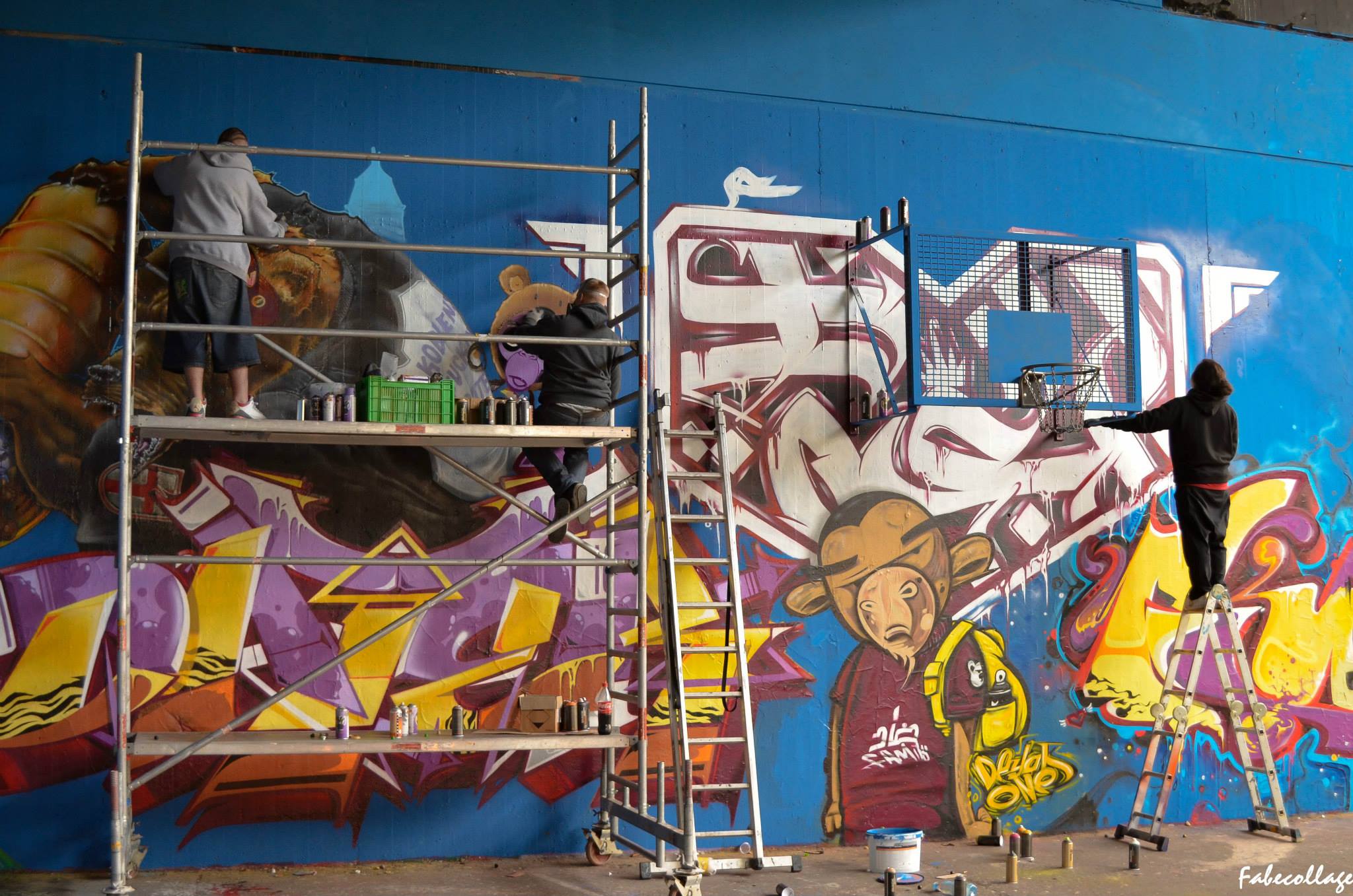
As an artist, traveling and meeting other creatives helped me grow more than anything else. It shaped my identity and sharpened my style. That’s why I always work toward hosting events, building platforms, and making these exchanges possible in our region.
Boxir: Finally, time to go back to you as the main character of this story. Is there any upcoming personal project/idea/event… you would like to talk about?
Deyaa: Even though the Dhad chapter has closed, my journey is far from over. The mission continues.
I’m currently working on a new project to support the graffiti community and build a more sustainable art ecosystem in the region. I can’t reveal too much yet—but something exciting is on the horizon. Stay tuned!
Boxir: Thanks a lot for sharing your own experience with us, if you like to greet anyone that’s your chance and if you have any suggestion for anyone here visiting Saudi Arabia soon, that’s much appreciated. Thanks again!
Deyaa: Thank you, Boxir. I truly enjoyed this conversation. All praise to Allah—and deep thanks to my family and my beloved wife for their unwavering support.
To your readers: come visit us. Discover the beauty, diversity, and soul of Saudi Arabia—its people, its landscapes, and its incredible food. This is your second home.
If you want to dig more:
– Deyaa Rambo website
– Deyaa Rambo Instagram page
– Dhad shop Instagram page
